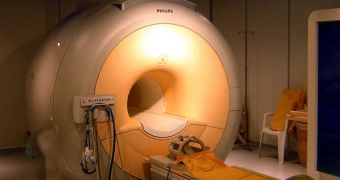Neurobiologists have known for a long time that new memories accumulated in the brain change the organ's very structure, causing it to change its shape in order to accumulate the knowledge. But exactly how this is done, and where new memories are stored is a puzzle. Now, a groundbreaking new study from experts at the Tel Aviv University comes to shed some light on this, through the use of a Magnetic Resonance Imaging (MRI) technique known as Diffusion Imaging MRI. In charge of the investigation is renowned international expert Dr. Yaniv Assaf.
With the new imaging method, “we can investigate the microstructure of the tissue without actually cutting into it. We can measure how much capacity our brain has to change structurally, what our memory reserve is and where that happens,” he says. Early test results seem to reveal the fact that the microstructure does not take weeks to months in order to change, as previously thought, but rather only a few hours. The finds were recently presented in San Francisco, at the Annual Meeting of the Human Brain Mapping Organization.
The study “gives us a quantifiable measure of the plasticity of each individual brain. It's possible that before a person experiences any memory loss, the plasticity is affected – that is, the ability of one's brain to adapt to change. A lack of ability for change in the brain could mean susceptibility to dementia. Now, we have the means to monitor this ability,” Assaf says. In the experiments he and his colleagues conducted, subjects had their brain looked at with diffusion imaging, and then played a computer racing game on the same virtual track some 16 times.
The team says that repeating an action for so many times appeals to the participants' spatial memory. When they were placed in the MRI machine a couple of hours later, the subjects showed significant changes in the microstructure of their brains. “The most striking thing about this study is that it shows structural plasticity happening in only two hours. This changes what we think structural plasticity is. It shows that memory is rapidly changing the structure of the cells, and that may lead to a lasting effect on the brain,” Assaf argues.
“We can [now] study the memory capacity of an individual at high risk for these disorders, and compare it to the morphological plasticity of people who are not at risk. Such an approach may allow us to develop an intervention at an early stage, possibly in the form of drugs, one that may not be appropriate at a later stage,” the expert concludes.

 14 DAY TRIAL //
14 DAY TRIAL //